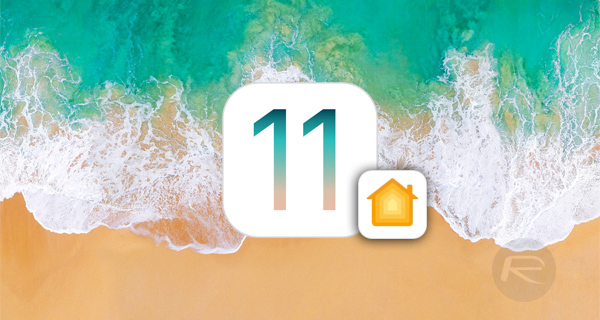Apple HomeKit in iOS 11, here are all the new changes and features coming to home automation on iPhone and iPad in one place.
Apple’s announcement of iOS 11 had so many facets that it can be truly difficult to keep tabs on what the company has changed, particularly when it comes to its tablet, the iPad. There are plenty of device agnostic features that have received a feature bump as part of the iOS 11 announcement, and one of those that should prove popular when iOS 11 ships in September, is HomeKit.

As part of iOS 11, HomeKit will receive some new features, allowing it greater control over what home automation devices do and when they do it. Below we are going to outline those new features, and while HomeKit is not for everyone, we suspect everyone will at least be able to appreciate that Apple is going in the right direction with its framework.
Conditional Triggers: Having a trigger fire based on a set variable and then multiple actions be taken is never going to get old. The time reaches a certain point and the lights turn on. It’s simple, but it’s magical. Conditional triggers allow an extra layer to be added to this though. Perhaps you only want the lights to turn off or on at a specific time when the house is empty with no one present. That’s a conditional trigger.
Multi-Person Geofencing: If that sounds impressive, it is because it is. With multi-person geofencing HomeKit can have triggers fire based on whether individual people are home or not. Previously HomeKit could not differentiate between different people, which is a problem if you have more than one person living in a home. Allowing HomeKit and its compatible devices to know who is home means advanced actions can be taken depending on a person’s presence, or the lack of it.
Relative Time Offsets: A more simple addition, this feature allows actions to be triggered in a certain amount of time after a state is set. For example, lights could be turned off in a garage 15 minutes after the door was closed.
Absolute Date & Time Events: For example, fire an event at 9pm on December 5th.
One-Time Events: This basically makes way for setting a trigger for a certain date as a single event, and can be useful for triggering events that you are likely to forget in the bigger scope of things.
End Events: Finally. You can now end events after a specified period of time has passed. For example, turn off the lights after 15 minutes if no motion is detected in the living room.
AirPlay 2 Speakers, Sprinklers, Faucets: Starting with iOS 11, HomeKit and Home app will support AirPlay 2-based Speakers (including Apple’s own HomePod) for multi-room audio, sprinklers, and faucets accessories.
Pairing Accessories With NFC Or QR Codes: iOS 11 now lets users pair HomeKit accessories using NFC and QR codes.
Improved Bluetooth LE Latency: Bluetooth LE-based accessories will now experience reduced latency from several seconds to now just under a second.
HomeKit Certification/Authorization By Software For Hobbyist: Apple is now allowing hobbyist to create their own HomeKit accessories using software-based certification and authorization instead of having to go through the tedious and difficult process of hardware-based certification.
There are many additions to HomeKit and new are being found all the time, but one thing is clear. After a stumbling start Apple does appear to be getting to grips not only with Home Automation, but with what users need it to be capable of as well.
You may also like to check out:
- How To Downgrade iOS 11 Beta To iOS 10.3.2 / 10.3.3 [Tutorial]
- How To Fix PS4 Slow WiFi Speed Issues [2017 Edition]
- Download iOS 11 Beta 1 & Install On iPhone 7, 7 Plus, 6s, 6, SE, 5s, iPad, iPod [Tutorial]
- Jailbreak iOS 11 On iPhone And iPad [Status Update]
- Jailbreak iOS 10.3.2 / 10.3.1 / 10.3 / 10.2.1 For iPhone And iPad [Latest Status Update]
- Download iOS 11 Beta OTA Configuration Profile Without UDID / Developer Account [How-To Tutorial]
You can follow us on Twitter, add us to your circle on Google+ or like our Facebook page to keep yourself updated on all the latest from Microsoft, Google, Apple and the Web
